I am creating the cell programatically using the reuse identifier.
Note - I am not using storyboard for creating the cell
Whenever the cell is dequeued, the cell is nil, so the cell needs to be newly created using alloc, which is expensive.
EDIT (added 1 more question and corrected code)
Question
- Why does this dequeue always return nil ? How can I correct it ?
- Does dequeue work only when used along with storyboard / nib file ?
Code
- (UITableViewCell *)tableView:(UITableView *)tableView cellForRowAtIndexPath:(NSIndexPath *)indexPath
{
static NSString *CellIdentifier = @"Cell";
UITableViewCell *cell = [self.tableView dequeueReusableCellWithIdentifier:CellIdentifier];
if(!cell) //Every time cell is nil, dequeue not working
{
cell = [[UITableViewCell alloc] initWithStyle:UITableViewCellStyleDefault reuseIdentifier:CellIdentifier];
}
return cell;
}
